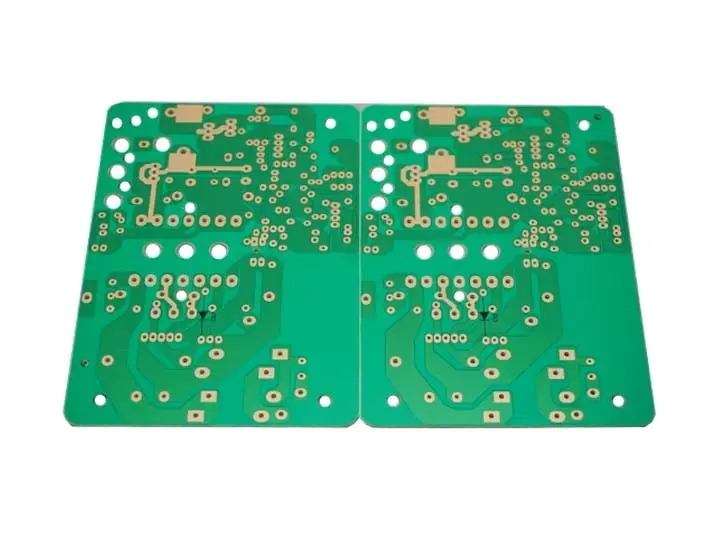
Discussion on PCB Design and Selection of Processing Substrate
It is one of the important contents of PCB design to choose the substrate of PCB correctly. Familiar with the properties of the base material can minimize the degradation of the properties of the base material during processing and welding. However, some designers just ignore this point. When independently developing and designing products, they must understand the characteristICs of the substrate and independently select the appropriate substrate according to the circuit characteristics. When selecting the substrate, PCB designers and manufacturers should balance the characteristics of the circuit and the environment in which the PCB is used, the reliability, manufacturability, cost, environmental protection requirements and other factors to select the appropriate material.
1. Meet the requirements of circuit characteristics and the use environment of printed boards
When selecting the substrate, the characteristics of the circuit and the requirements of the use environment of the printed circuit board should be considered first.
The working characteristics of the circuit on the PCB are closely related to the performance of the substrate, especially for high-speed and high-frequency circuits. The dielectric constant and dielectric loss of the substrate have a significant impact on the circuit performance. When selecting the substrate, the matching between the substrate performance and the circuit must be considered. Otherwise, even if the quality of PCB processing is good, it is difficult to ensure that the circuit has good working performance.
The use environment of the printed board is a factor that must be considered when selecting the base material. For example, for the printed board used under high temperature conditions, it is necessary to select the base material with good heat resistance (such as FR-5); For printed boards used under high working voltage, the substrate with good voltage resistance and insulation resistance should be selected; For printed boards used under high humidity conditions, the substrate with low moisture absorption and good insulation performance should be selected; For printed boards working under vibration conditions (such as printed boards for Automotive electronics), the substrate with good mechanical strength should be selected. In a word, the selected substrate should meet the requirements of the use environment of the printed circuit board, and the degradation of the performance of the printed circuit board under the use environment should not affect the quality of the entire electronic product.

2. Meet the reliability requirements of products
Product reliability refers to the ability of a product, equipment or system to complete a specified function under specified conditions and within a specified time. The printed circuit board is the basic component of the complete electronic product, and its reliability should be higher than that of the complete electronic product. The higher the reliability of the printed circuit board is, the more stable and reliable the required substrate performance is. General consumer electronic products, such as electronic toys and printed boards for radios, can use phenolic paper based copper clad foil substrates (FR-2, FR-3), while electronic products with high reliability requirements, such as electronic computers, industrial electronic instruments and military highly reliable electronic products, should use epoxy glass cloth coated copper foil substrates (FR-4) or other high-performance substrates.
3. Consider the manufacturability requirements of products
The manufacturability of products shall include the manufacturability and installation of printed boards. For example, for large batches of printed boards that need to be die cut to process the shape, phenolic paper based copper clad foil substrate (FR-I.FR-2) or composite substrate (CEM-1, CEM-2, CEM-3) with good die cutting performance should be selected; For printed boards requiring plated holes (metallized holes), base materials with good moisture absorption and electroplating resistance (such as FR-4 series base materials) shall be selected; For multilayer printed boards, thin copper-clad laminates and sEMI cured sheets with compatible properties shall be selected according to the thickness requirements of the interlayer insulation layer and the requirements of the laminating process; For printed boards using lead-free soldering technology, the base material with higher Tg and better heat resistance should be selected. The performance of the substrate shall meet the manufacturing and installation process requirements of the printed board.
4. Consider cost requirements
The principle of lowest cost must be taken into account in the design of any product. The same applies to the selection of substrate for printed boards. On the premise of meeting the performance and use requirements, the cost should be considered as low as possible. There are many kinds of base materials and their costs vary greatly. When selecting, it is necessary to optimize the cost performance of the base materials and select the base materials with the best cost performance. When selecting the same type of base materials, try to consider the materials within the product series catalog of the base material supplier, and try not to select non-standard materials or materials outside the product series catalog, which is conducive to reducing costs.
5. Environmental requirements
Considering environmental protection is an inevitable trend of technological development in the world today. In the process of product design, it should be considered that the product has the lowest impact on the environment in the entire life cycle. Therefore, renewable, recycLED or environment-friendly materials should be used to the maximum extent when selecting base materials. Because halogen-containing compounds are usually used as flame retardants in the base materials of general printed boards, dioxin gas will be generated when burning the base materials when the printed boards are post processed after completing the mission, which will cause harm to human beings and the environment. Therefore, halogen-free base materials must be used for products that meet the requirements of ROSH Directive, and halogen-free base materials should also be used for other products as far as possible.
The manufacturers of PCB manufacturing, PCB design and PCBA processing will talk about the selection of PCB design and processing substrate.









